
Kaishan USA Holds Groundbreaking for Expansion
April 24, 2024
What Kind Of Air Compressor Do I Need?
May 8, 2024Summer Air Compressors Tips
Kaishan USA | May 1, 2024 | Uncategorized

Operators of compressed air systems in the electronics industry will want to take special precautions to protect their oil-free rotary screw air compressors from the summer heat.
Temperatures are already rising across most of North America. So, there’s no time like the present to ensure your air compressor is ready for the hot weather to come.
If you haven’t already done so, we strongly recommend performing your annual preventive maintenance before the dog days of summer arrive. That way, your filters will be clean, and your oil will be fresh as you head into the worst time of the year for your compressor.
It’s the best way to take care of your equipment.
How Heat Impacts Your Air Compressor
Hot weather is brutal on your compressor:
-
- The air is hotter, making your compressor’s cooling system work harder, reducing its capacity and increasing the temperature of discharge air. In addition, hotter discharge air means your dryer does not work as efficiently.
- The air is thinner, so your compressor produces less air flow (CFM). That makes your system work harder to maintain header pressure. There is also less air density across the air cooled heat exchangers, so your coolers will need to work harder (underscoring how important it is to keep them clean).
- The air is wetter, increasing the workload on refrigerated air dryers. Specifically, the moisture load doubles for every 10°F rise in temperature.
That’s why you should take extra care and plan for the worst-case scenario when the temps head toward the triple digits. That’s especially true of oil-free machines used in food and beverage, semiconductor, electronics and other applications that require high-quality air.

For more information on why you should prepare your system for summer, read our blog post, “Hot Weather Impacts on Air Compressor Systems.”
Get Your Preventive Maintenance Done Now
As mentioned, it’s a good idea to do your PM before the temperatures soar. Many companies like to do comprehensive preventive maintenance in the fall because things usually slow down a little before the end-of-year holidays.
But we always encourage our customers to do their PM in the spring so your system is in optimal condition before the hot weather pushes it to its limits.
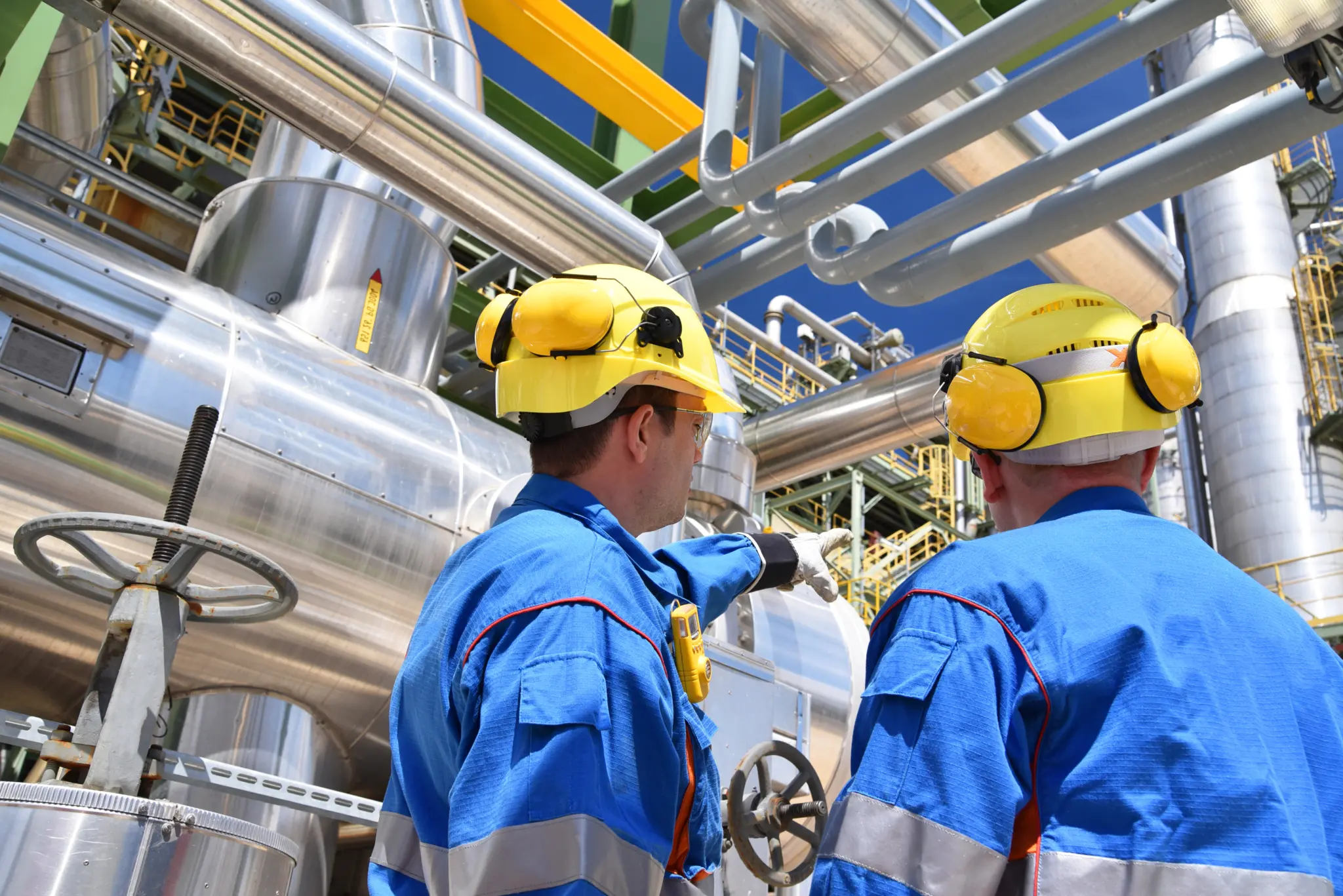
A good preventive maintenance program will help you avoid unplanned downtime, saving time and money.
The goal of preventive maintenance is to anticipate problems before they happen, addressing compressor issues that could worsen and lead to a shutdown. A good preventive maintenance program thus will pay for itself in lower service and replacement costs, reduced energy consumption (not to mention lower utility bills) and fewer costly shutdowns. The result? Fewer instances of lost production time and the associated labor and overtime costs.
In fact, industry research has proven that a proactive maintenance strategy can help you reduce maintenance costs by as much as 70%.
The Big Picture
To get off to a good start, you should check several key components to ensure your system can handle the summer heat.
-
- Oil. Check your compressor oil and make sure it is not contaminated or worn out. Change it if it hasn’t been replaced since last year or within 8,000 hours (more frequently if your compressor runs at high temperatures). Most lubricants should be changed at 8,000 hours, but others, like food-grade lubricants, should be replaced at 4,000 hours. One of the critical elements of maintenance is adjusting service intervals to allow for a more challenging environment. And make sure you send out an oil sample for testing.
- Oil. Check your compressor oil and make sure it is not contaminated or worn out. Change it if it hasn’t been replaced since last year or within 8,000 hours (more frequently if your compressor runs at high temperatures). Most lubricants should be changed at 8,000 hours, but others, like food-grade lubricants, should be replaced at 4,000 hours. One of the critical elements of maintenance is adjusting service intervals to allow for a more challenging environment. And make sure you send out an oil sample for testing.
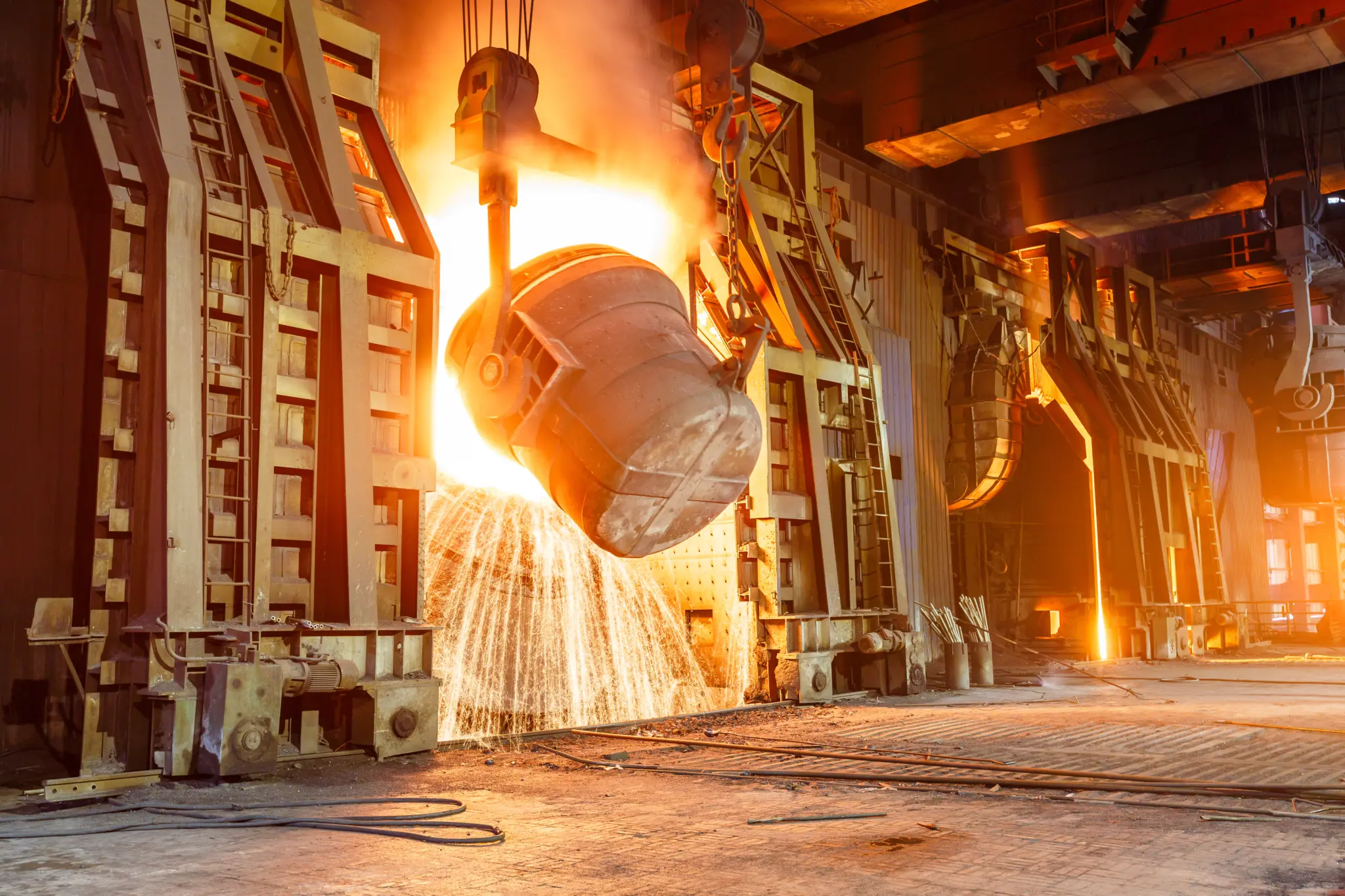
While a manufacturer might say that the compressor oil needs to be changed every 8,000 hours, you may want to cut that time in half in a setting like metallurgy since the harsh, high-temperature environment will cause oil to degrade more rapidly.
-
- Air flow. Make sure all vents are open. Verify fans are functioning if used for moving air in your equipment room. When you walk into the room, does it feel hot? If so, you have to improve the air flow. See the discussion of vents in the “Air Flow” section below.
- Heat exchangers. Make sure your heat exchanger coils are clean and free of dust and debris.
- Filters. Fortunately, if you have a Kaishan compressor, its control system will monitor the pressure differential in your compressor’s intake air, oil and air filters and notify you of any problems. Your compressor’s controls, however, do not check the filters in your downstream equipment, so you’ll want your team to check the differential pressure (DP) gauges in your downstream devices. Differential pressures in the red zone indicate a filter is clogged and wasting energy. That’s something you don’t want to ignore—if your filter has collapsed, you’re heading for a shutdown and a costly service call.
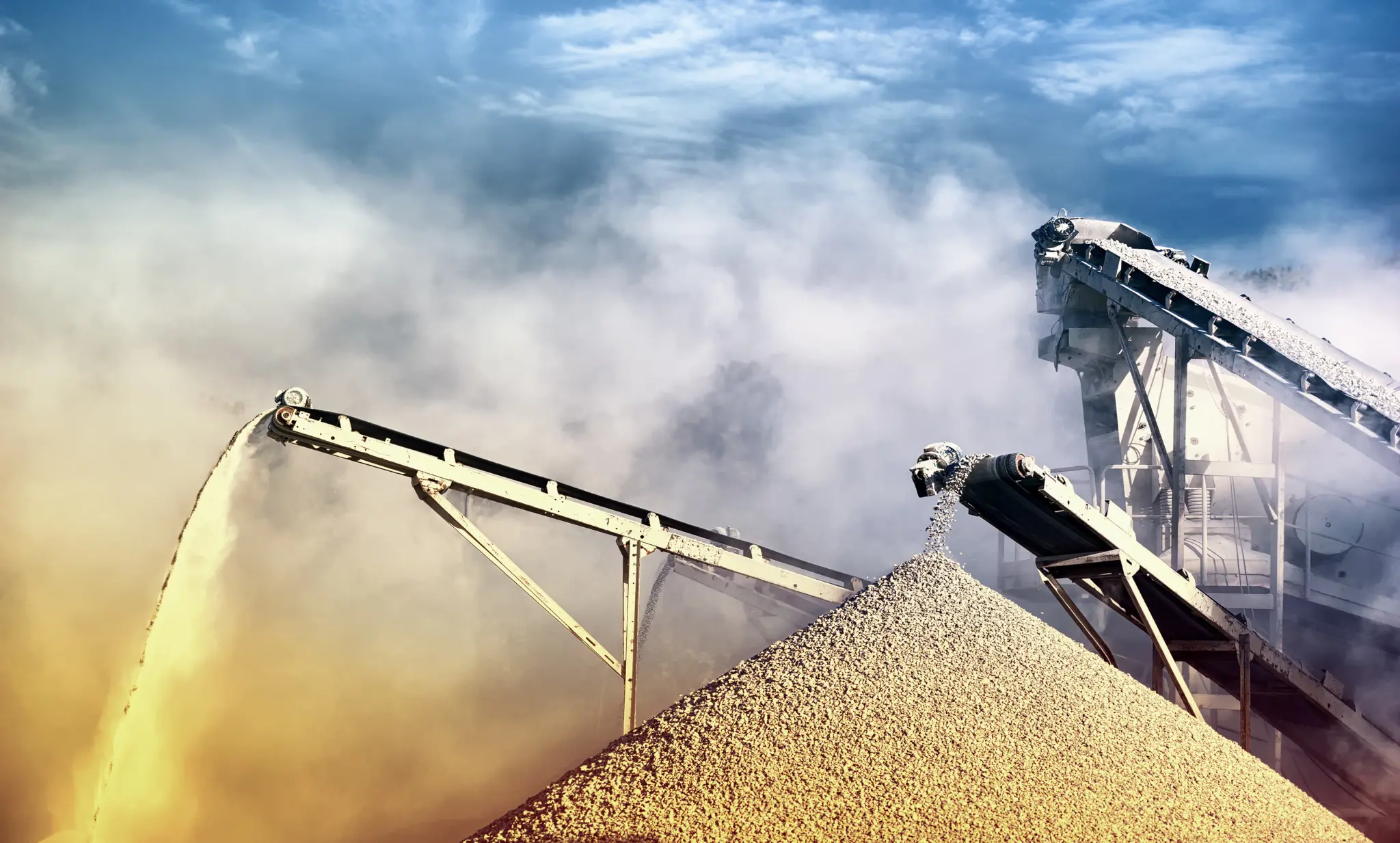
In a cement plant, the dust and dirt quickly build up in air and oil filters, so you will want to change them more often.
-
- Traps and drains. Inspect the moisture trap drain and the drains in all your tanks, filters and dryers. You’ll want to remove any scale, rust, dirt or other solids from condensate traps and drain points daily. Dirt and debris often accumulate in drains, causing them to become stuck. Stuck in an open position, the drain will leak air. And a closed drain will allow moisture and other impurities to pass through, contaminating your compressed air and possibly damaging production equipment.
The following checklist of air compressor tips provides some additional specifics you’ll want to complete before summer arrives.
17 Tried-and-True, Get-Ready-for-Summer Air Compressor Tips
Compressor Oil
1. Change compressor oil.
2. Change oil filters to remove metal filings, calcium and other materials in the oil and prolong its useful life.
3. Draw an oil sample and send it to a qualified lab for analysis. Most manufacturers, including Kaishan, require oil sampling for extended warranties.
Oil Separator
4. Change the oil separator.
5. Replace drop-in air/oil separators at 8,000 hours or annually (or as the differential pressure indicates). Spin-on separators should be changed every 4,000 hours or six months.
Compressor Motor
6. Add motor grease at manufacturer-recommended intervals. Make sure to add the amount and type of grease specified on the motor nameplate. If you cannot find the information, contact the motor manufacturer or your local distributor.
Traps and Drains
7. Remove any scale, rust, dirt or other solids from condensate traps and drain points.
8. Make sure that all drains operate correctly, including the drains on the moisture trap, filtration, dryers and tanks. Test each one to be sure.
Filters
9. Change your inlet filter.
10. Inspect all other air filters (like intake or panel filters), replacing them as needed.
Coolers
11. Deep clean coolers, especially exposed surfaces like the heat exchanger fins, to remove dust and dirt. Make sure you are blowing out your coolers regularly as well.
Valves
12. Clean and service valves, making sure thermal valves work properly.
Belts and Couplings
13. Inspect belts and couplings. Swap out as they begin to show wear.
Electrical
14. Inspect your electrical cabinet, removing dirt and dust buildup. Make sure fans are running and clean any filters inside the cabinet. Verify all electrical connections are secure.
Ductwork
15. Inspect the ductwork, making sure it is clean and free of obstructions.
16. Make sure thermostatic controls are working correctly.
Dryer
17. Service your dryer, cleaning dirt and debris from filters and confirming that traps and drains are clear. In refrigerated dryers, check refrigerant pressures and clean heat exchangers.
Safety
Don’t forget to follow all appropriate workplace and manufacturer lock-out, tag-out procedures!
Long-Term Air Compressor Tips
Companies do best when they think strategically about optimizing the performance of their compressed air systems under the most adverse conditions.
Your pre-summer review of your compressed air system is a great time to take a broader look at your system and determine if it’s meeting your needs. The two critical elements affected by changes in system demands are sizing and air flow.
Size
Are your compressor, dryer and cooling equipment sized correctly for your worst-case ambient temperature conditions?
Because the air in summer is thinner, you may need to oversize your compressor and cleanup equipment by as much as 10% to 15% to make up the difference in output. Dryers, filters and separators should be sized for the hottest day of the year, using correction factors provided by the manufacturer.
Pay special attention to your dryer. The higher the inlet temperature, the more you need to oversize the dryer. If your compressor room is 110°F and you have mediocre coolers, for example, you’re passing 130°F air through to your dryer. So, following the manufacturer’s correction factor, you need to add dryer capacity, incurring costs and increasing energy consumption.
The alternative isn’t pretty. Undersized dryers and cooling equipment may result in poor air quality at peak times, contaminating the air distribution system and the equipment it’s attached to.
Air Flow
Air circulation through your compressor enclosure is critical to hot-weather operation. You can use several possible configurations to move air through your equipment room.
For smaller compressors, louvered inlets and outlets in your compressor room may provide enough air flow through your enclosure to remove the heat generated in the compressor. But it all depends on the ambient conditions.
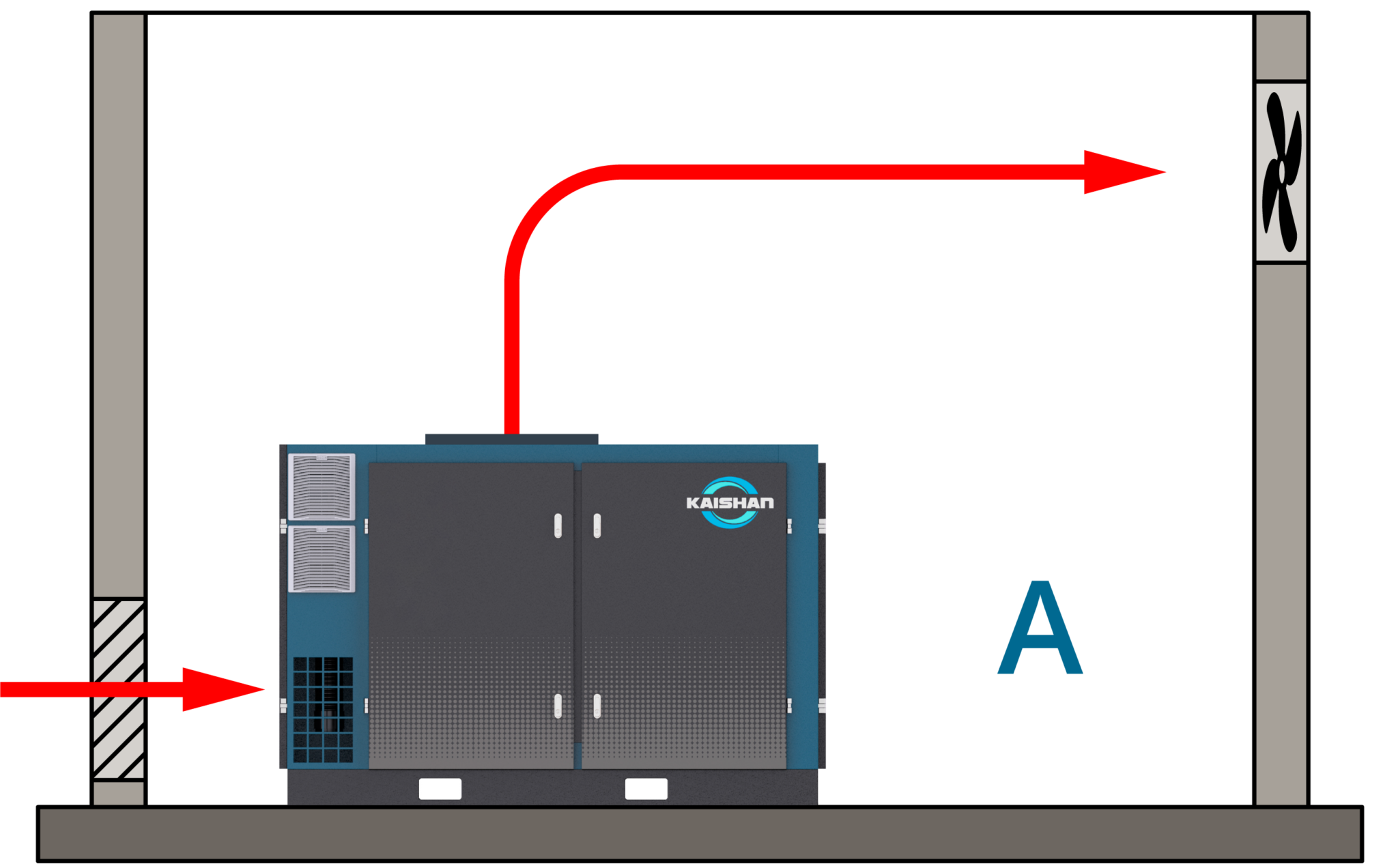
Depending on ambient conditions, you may only need louvered inlets and outlets to keep a smaller compressor cool.
Compressors larger than 25 HP usually require forced ventilation, but every site is different. An exhaust fan pulls the air through the ductwork and blows it outside. Consult a qualified heating and air conditioning professional in your area for sizing, designing and installing ductworks.
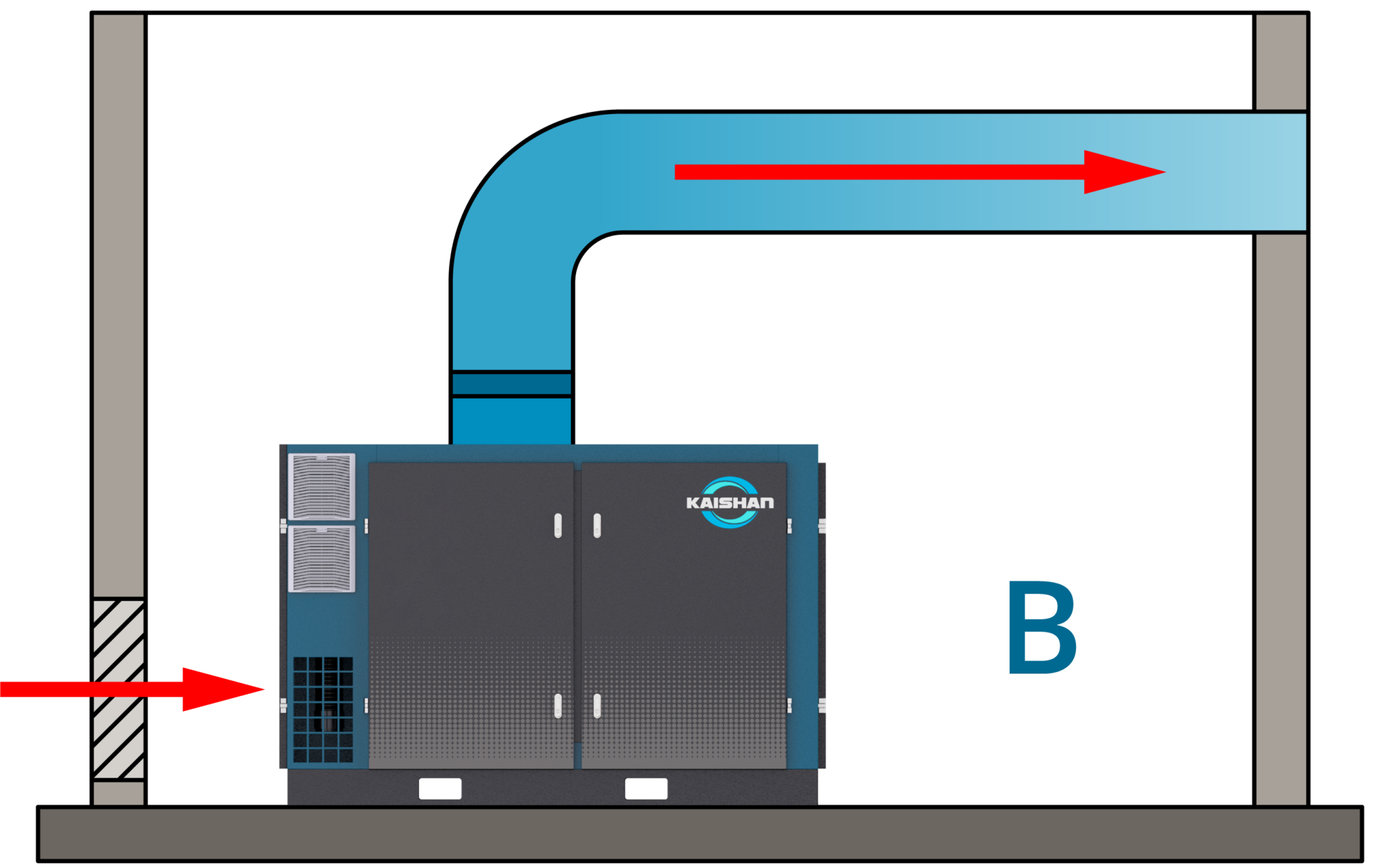
For larger units (25 HP and above), you may need a fan and ductwork to remove heat. Consult an HVAC professional for assistance.
In northern climates, it’s also possible to save significant amounts of energy by recovering the heat removed from the compressed air system in the winter. A damper directs the air toward an outside vent in the summer, and in the winter, the air goes toward space heating or preheating other operations.
How Kaishan Helps
Kaishan has taken several steps to ensure our rotary screw air compressors do well in even the most challenging environments. Major enhancements include:
-
- Oversized coolers. Kaishan designs its units to handle hotter environments by oversizing the coolers. We build most of our units to withstand temperatures as high as 122°F, while many of our competitors list 104° to 115°F as their maximum ambient air temperatures. If your compressor runs above 200°F, you’ll have problems with oil life. Oil and other lubricants do not last as long at higher temperatures.
- Spacious packaging. We also design our packages to optimize air flow. Spacing out the internal components allows them to cool more efficiently. As a result, our compressors may not be the most compact on the market, but they handle hot weather better than machines with tighter spaces. And they’re easier to service.
- Robust lubricants. Kaishan's OEM lubricants have undergone rigorous testing in extreme environments, from the frigid polar regions to the scorching heat of deserts, ensuring their resilience and efficiency in varying weather conditions. This proven performance record makes Kaishan's OEM lubricants a trusted choice for reducing downtime and increasing operational productivity, regardless of weather conditions. For more on how our KTL-8000 oil was formulated to work in Kaishan rotary screw compressors, read our blog post, “Choosing the Right Rotary Compressor Oil.”
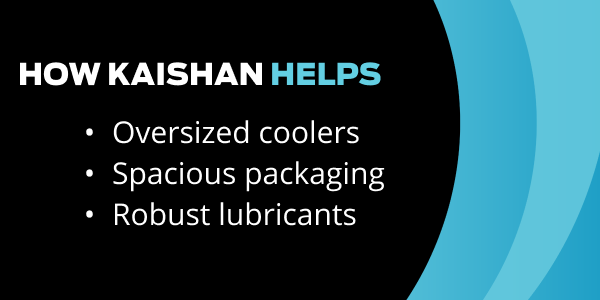
Get Air Compressor Tips from a Local Source
Following a consistent air compressor maintenance plan will ensure that you deliver high-quality compressed air, save money and prolong the life of your air compressor and the other components in your compressed air system. It may even extend the service life of the equipment you’re powering.
According to recent research, however, many companies are finding that they no longer have the expertise in-house to deal with the complexities of today’s advanced equipment like air compression systems.
That’s why having a relationship with an air compressor maintenance professional is critical to ensuring that your compressed air system is ready to handle the demands of hot weather.
Kaishan USA works with a nationwide network of independent distributors, who can provide on-site help and consultation as needed. These factory-trained air compression experts can service your air compressor system without a problem and ensure your system can take the heat.
Key Takeaways
-
- Summer heat affects your air compressor because the incoming air is hotter, thinner and wetter.
- We always encourage you to do your preventive maintenance before the hot weather pushes your system to its limits.
- Big picture issues to address before summer include air flow, heat exchangers and filters.
- Kaishan helps by providing all our rotary screw compressors with oversized coolers, spacious packaging and robust lubricants.
Let Us Help
Getting your rotary screw air compressor ready for the summer heat is critical to the operation of your compressed air system and all the processes that rely on that system. If you need help, get in touch with the experts at Kaishan. Contact us today.
Random stat or
customer quote
textXXtext
text

